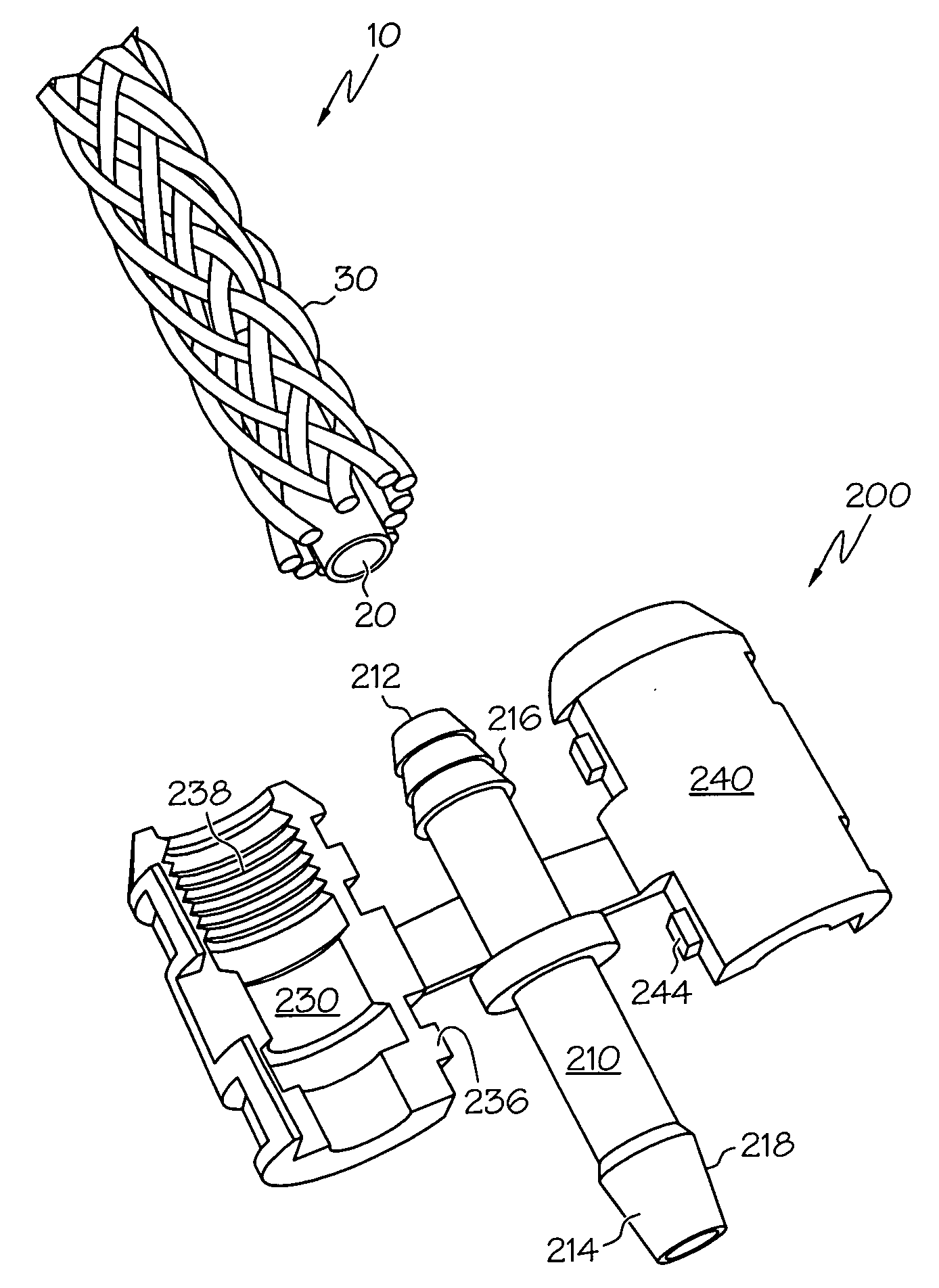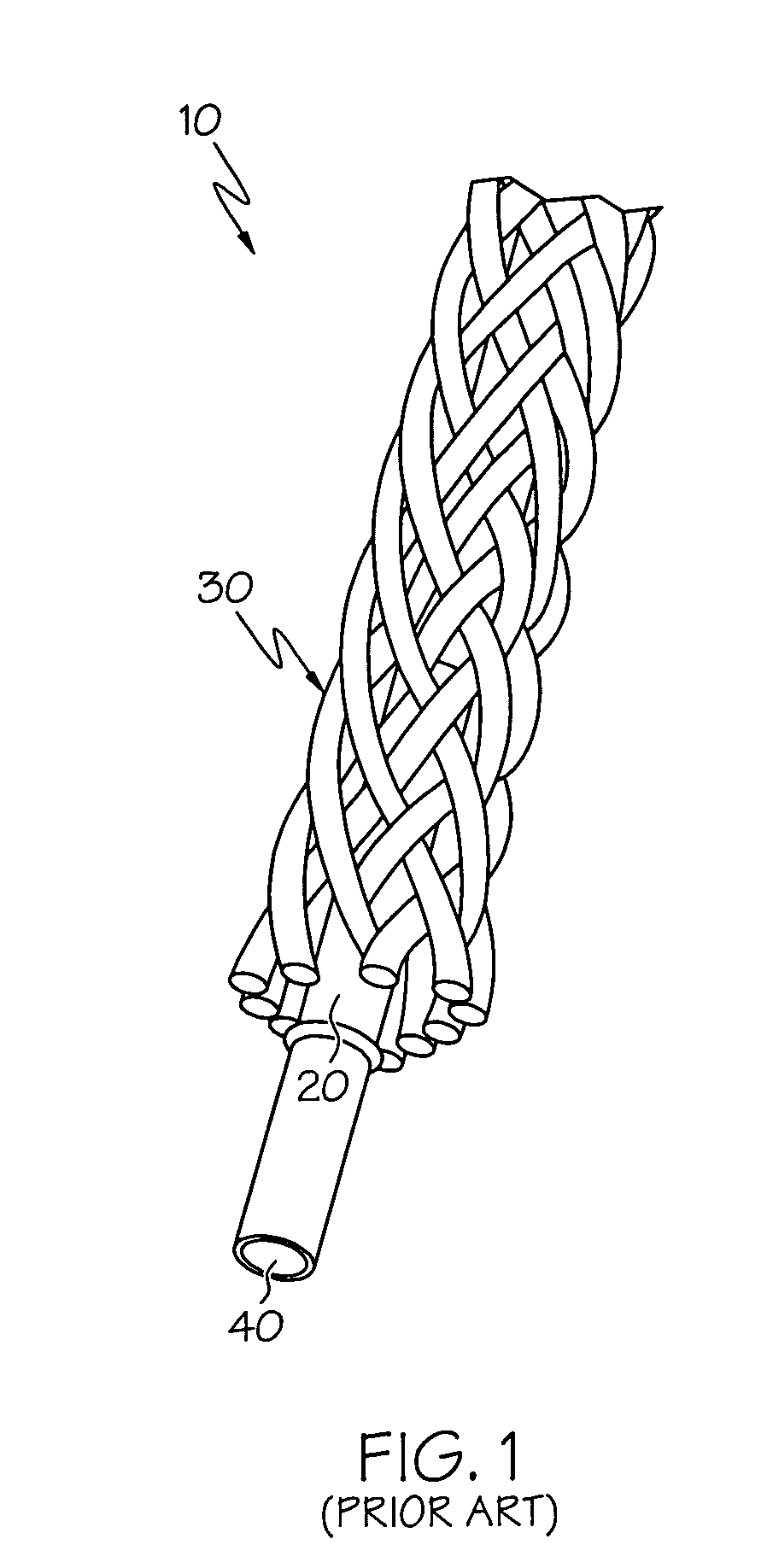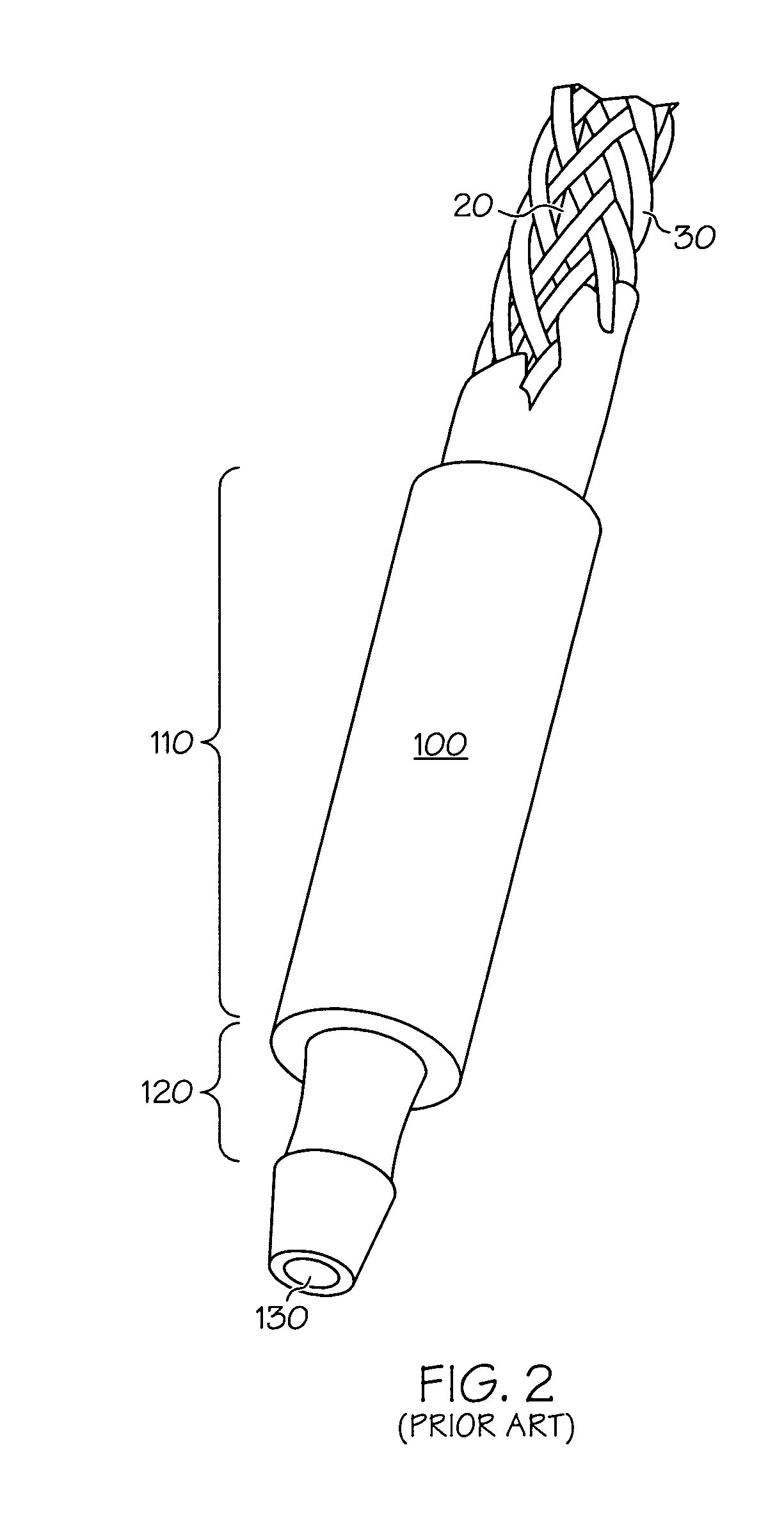Fitting and fluid-conveying device connected thereto
a fluid conduit and fitting technology, applied in the direction of hose connection, separation process, application, etc., can solve the problems of increasing complexity, cost and the likelihood of rejecting finished parts, reducing the efficiency of the clamping process, so as to promote a first-order kinetic diffusion reaction and improve the procedure. the effect of speeding up the coupling speed and improving the procedur
- Summary
- Abstract
- Description
- Claims
- Application Information
AI Technical Summary
Benefits of technology
Problems solved by technology
Method used
Image
Examples
Embodiment Construction
[0026]Referring to FIG. 3, a fitting 200 according to an aspect of the present invention has a body 210 comprising a proximal end 212 and a distal end 214 between which a fluid bore 220 extends to establish fluid communication between a first tube (not presently shown) and a socket, second tube or related receptacle (none of which are shown, and collectively referred to as a second tube, a component, a device or the like, the usage of which will be apparent from the context). A fluid inlet corresponds to the proximal end 212, while a fluid outlet corresponds to the distal end 214, although it will be appreciated by those skilled in the art that the terms “inlet” and “outlet” are relative, and that in the event of a reversal of flow through a first and second fluidly-coupled tubes, the roles would be reversed. Each of the proximal and distal ends 212, 214 include radially-projecting male barbs 216, 218 that act as connectors and can be used to engage complementary surfaces on the res...
PUM
| Property | Measurement | Unit |
|---|---|---|
| thick | aaaaa | aaaaa |
| thick | aaaaa | aaaaa |
| force | aaaaa | aaaaa |
Abstract
Description
Claims
Application Information
 Login to View More
Login to View More - R&D
- Intellectual Property
- Life Sciences
- Materials
- Tech Scout
- Unparalleled Data Quality
- Higher Quality Content
- 60% Fewer Hallucinations
Browse by: Latest US Patents, China's latest patents, Technical Efficacy Thesaurus, Application Domain, Technology Topic, Popular Technical Reports.
© 2025 PatSnap. All rights reserved.Legal|Privacy policy|Modern Slavery Act Transparency Statement|Sitemap|About US| Contact US: help@patsnap.com



